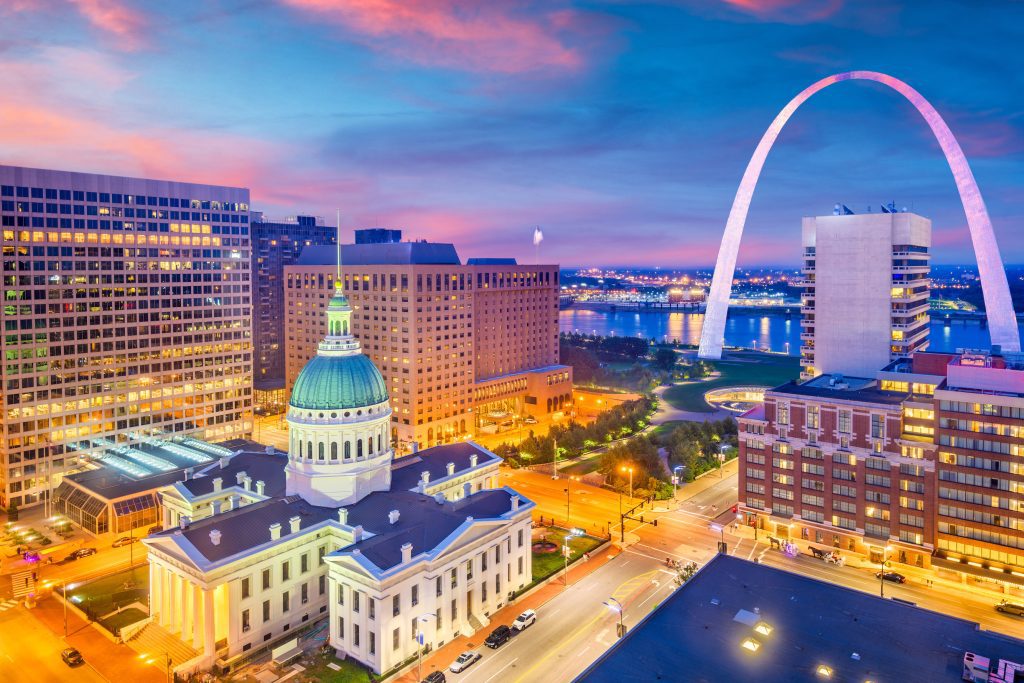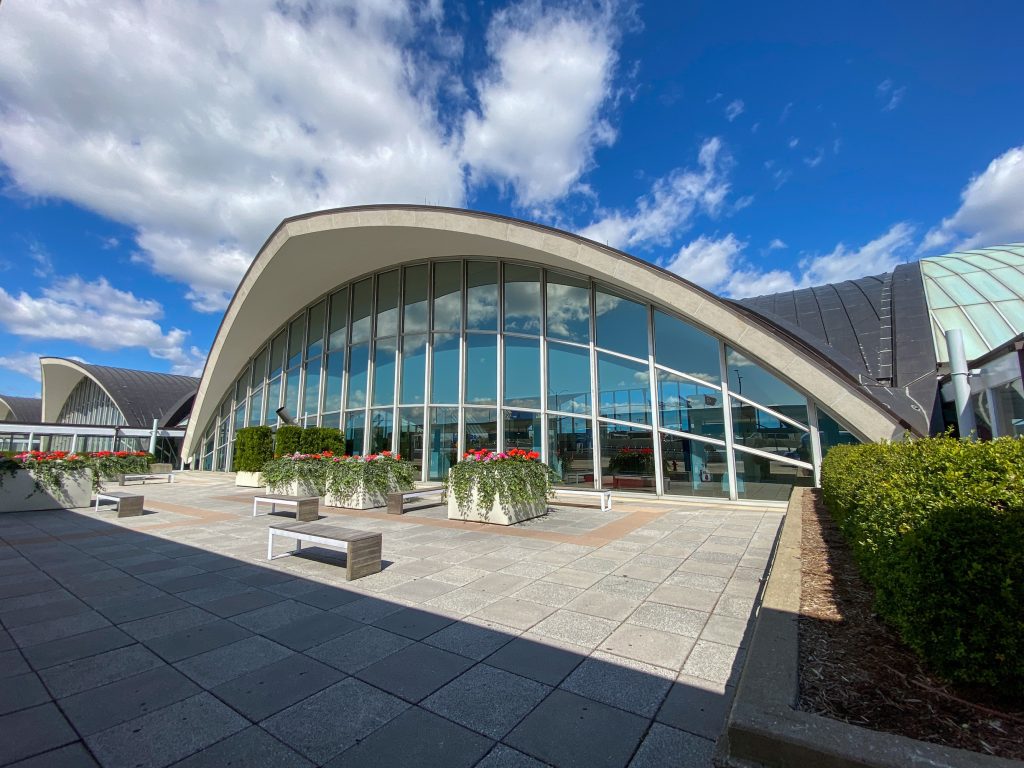Exploring the Architectural Styles of St. Louis

St. Louis stands proudly as a city that encapsulates a rich tapestry of architectural styles, showcasing a diverse history and cultural heritage. As a hub of architectural diversity, the city boasts a range of structures that span different eras, reflecting each period’s evolving tastes and influences. In this blog, we embark on a journey through a selection of famous architecture in St. Louis, exploring the history, elegance, and unique styles that define this captivating city.
The History and Elegance of St. Louis Architecture
To truly appreciate the architectural marvels of St. Louis, it’s essential to delve into the city’s history. St. Louis architecture tells a story of cultural and historical influences that have shaped the cityscape. The city reflects a dynamic blend of influences from French Colonial to Victorian, Italianate to Federal, and Mid-Century Modern to Colonial styles.
- French Colonial: Buildings designed and constructed by the French population in St. Louis evolved across two hundred years of New World colonization and combined French and Caribbean influences. A majority of these structures in St. Louis were residential.
- Victorian: Many significant structures in St. Louis were built during the Victorian period, making the architectural style prevalent across the area. This includes prevalent government buildings and urban detached homes. Thanks to evolutions in transportation, families with money were able to move further from the city center and build on larger plots of land along private streets, with many home builders opting for the popular Victorian designs from 1870 to 1900.
- Italianate: Around the time of the Civil War, when much of the city’s incorporated boundaries still included the countryside, Italianate villas appeared around St. Louis, most of which were built by famous industrialists and landowners. The Midwest was experiencing swift urbanization, and these Italianate homes brought an idealized, European rustic quality to the area. Henry Shaw’s country house, now called the Tower Grove House in the Missouri Botanical Garden, is a prime example of the Italianate style.
- Federal: This architectural style was popular around the early to mid-1800s as an evolution from the colonial Georgian style. Several homes were built in this style along Arsenal Street, one of the city’s earliest roads. The original courthouse, which was completed in 1828, was also constructed in the Federal style.

- Mid-Century Modern: Popular from the 1930s through the mid-1960s, Mid-Century Modern became popular as people looked for more modernist designs that represented progress and a break from tradition. St. Louis suburbs and entire neighborhoods were constructed following this architectural style as they were easy to build, could obstruct unsightly views, showcase natural light, and minimally impact natural settings.
- Colonial: Colonial Revival was common in the 1920s when the restoration of Williamsburg piqued American interest in 18th-century architecture. These buildings replicated this early architecture, just on a larger scale.
Understanding the architectural history is key to grasping the charm and significance of the various architectural styles.
Architecture Around the City
As we embark on our exploration, let’s first set the stage by examining the broader architectural landscape of St. Louis. This will serve as a foundation for our subsequent deep dives into specific styles and iconic landmarks.
Historic Residences: Timeless Architectural Styles Blend with Modern Amenities
St. Louis is home to many historic residences, each encapsulating a unique architectural style. From the charm of French Colonial to the opulence of Victorian, the enduring appeal of Italianate, the classical lines of Federal, the sleekness of Mid-Century Modern, and the timeless simplicity of Colonial architecture, these styles coalesce seamlessly with modern amenities.
Beauty and Function: Historic Locations Built With Artistic Detail
The functional, aesthetic wonders of locations like the Cathedral Basilica, STL Art Museum, and Anheuser Busch Brewery are a testament to the city’s commitment to blending beauty with practicality, showcasing various architectural styles like Romanesque and German influences.

- Cathedral Basilica: The Cathedral Basilica of St. Louis, located in the Central West End neighborhood, is a work of art in addition to a Roman Catholic Church. Over a dozen architects’ and artisans’ concepts were brought together to create this magnificent structure blending art and function.
- St. Louis Art Museum: Much like the artwork within its walls, the St. Louis Art Museum is built with every detail in mind. The main building opened in 1904, once called the Palace of Fine Arts, and was built in such a fashion. In 2013, the East Building was opened, and a touch of modernism was added, matching the works displayed inside.
- AB Brewery: As the company’s flagship brewery, the AB Brewery was built with German Romanesque architecture. The elaborate, red-brick buildings, rounded arches, embellished cornices, and castellated rooflines only scratch the surface of the design, as the buildings’ interiors are just as detailed. The brewery blends functionality and design, accommodating the brewery operations, offices, tasting room, and more.
The Gateway Arch + Lambert Airport’s Main Terminal: Innovative Designs by Architect Eero Saarinen
Eero Saarinen was a Finnish-born American architect recognized as one of the leaders of the trend toward exploration and experimentation in 1950s American architectural design. His designs have made an impact on various structures across the United States, particularly those that followed his unique, freely sculptural designs. When creating his designs, Saarinen believed that “we must have an emotional reason as well as a logical end for everything we do.”
The Gateway Arch, an emblem of modern architecture, symbolizes St. Louis as the “Gateway to the West.” Designed by Saarinen in 1948 and constructed between 1963 and 1965, the Arch welcomes travelers to the western part of the country. At a height of 630 feet, the Arch embodies the qualities of Saarinen’s works, conveying a sense of ceremony, special place, delight, and ease.

Saarinen’s innovative, mid-20th century work is also represented in St. Louis’ Lambert Airport main terminal entry. The building was constructed in 1956 and was designed by Minoru Yamasaki of the firm Hellmuth Yamasaki and Leinweber, taking inspiration from Saarinen. This design marked an era of groundbreaking architectural work, aligning with the city’s role in the post-World War II industrial boom of the U.S. Saarinen’s work is reflected in similar airports, including his design of the Trans World Airlines (TWA) terminal at John F. Kennedy International Airport in New York City and the Dulles International Airport outside Washington, D.C. His designs explored interior and exterior sculptural effects, presenting a symbol of flight.

Maritz & Young: The Gold Standard of Residential Architecture
Born in 1893, Raymond Maritz and W. Ridgely Young formed their architectural firm together at 27 years old, Maritz & Young, and their works have led to them becoming the most famous residential architects from St. Louis. Revered as the “gold standard” of residential architectural detailing, scaling, and proportions, their work is celebrated by Ladue’s architectural review board. Their designs are found mainly in homes throughout University City, Clayton, the Central West End, and Ladue.
Maritz & Young were considered to have some of the freshest ideas for St. Louis homes in their time, designing residences for some of the best and brightest clients in the business world. They brought some influence from their Beaux-Arts traditional studies into their designs. With their more traditional designs, they harkened back to old-world Europe, offering a sense of continuity from previous generations, and their Tudor revival style gave an impression of stateliness and long-standing performance. Several of their homes are listed as national historic landmarks and are adored by locals and visitors.
William Bernoudy: Mid-Century Modern Master
As an understudy to Frank Lloyd Wright in the 1930s, William Bernoudy is another notable figure in St. Louis architecture. Born and raised in St. Louis, he attended Washington University’s School of Architecture. His designs are highly sought after by architectural enthusiasts, and his many mid-century modern homes and other beautifully designed structures contribute to the unique architectural landscape of St. Louis.
In addition to various homes around the area, Bernoudy also designed notable structures like the Temple Emanuel on Conway Road, Saint Louis Zoo north entrance, and the Beaumont Pavilion at Washington University in St. Louis.
Contemporary Architecture: New Designs Moving the City Forward
As the city evolves, new contemporary architectural developments, trends, and innovations continue while still connecting to past styles. Exciting new structures and plans highlight St. Louis’ forward-thinking approach to design, like the One Hundred Apartments by Studio Gang and the planned Chouteau Greenway. Other developments integrate new designs without taking away from original architectural details, such as the upgraded Gateway Arch Museum and update to the Washington University McKelvey School of Engineering building.
Make Your Own Architectural Mark with Schaub Projects Architecture + Design
It’s evident that St. Louis’ legacy is worth preserving and celebrating, with a diverse architectural tapestry where history, innovation, and beauty combine in a stunning array of styles. As you explore the streets and structures, may you find inspiration in the unique designs that make St. Louis a true architectural gem.
Inspired to create your own architectural legacy in St. Louis? Contact the experts at Schaub Projects Architecture + Design. Whether you want to call upon the history of the area, or want to create something completely modern and unique, we have experience designing homes and businesses in various architectural styles to create the design you’ve always envisioned.
